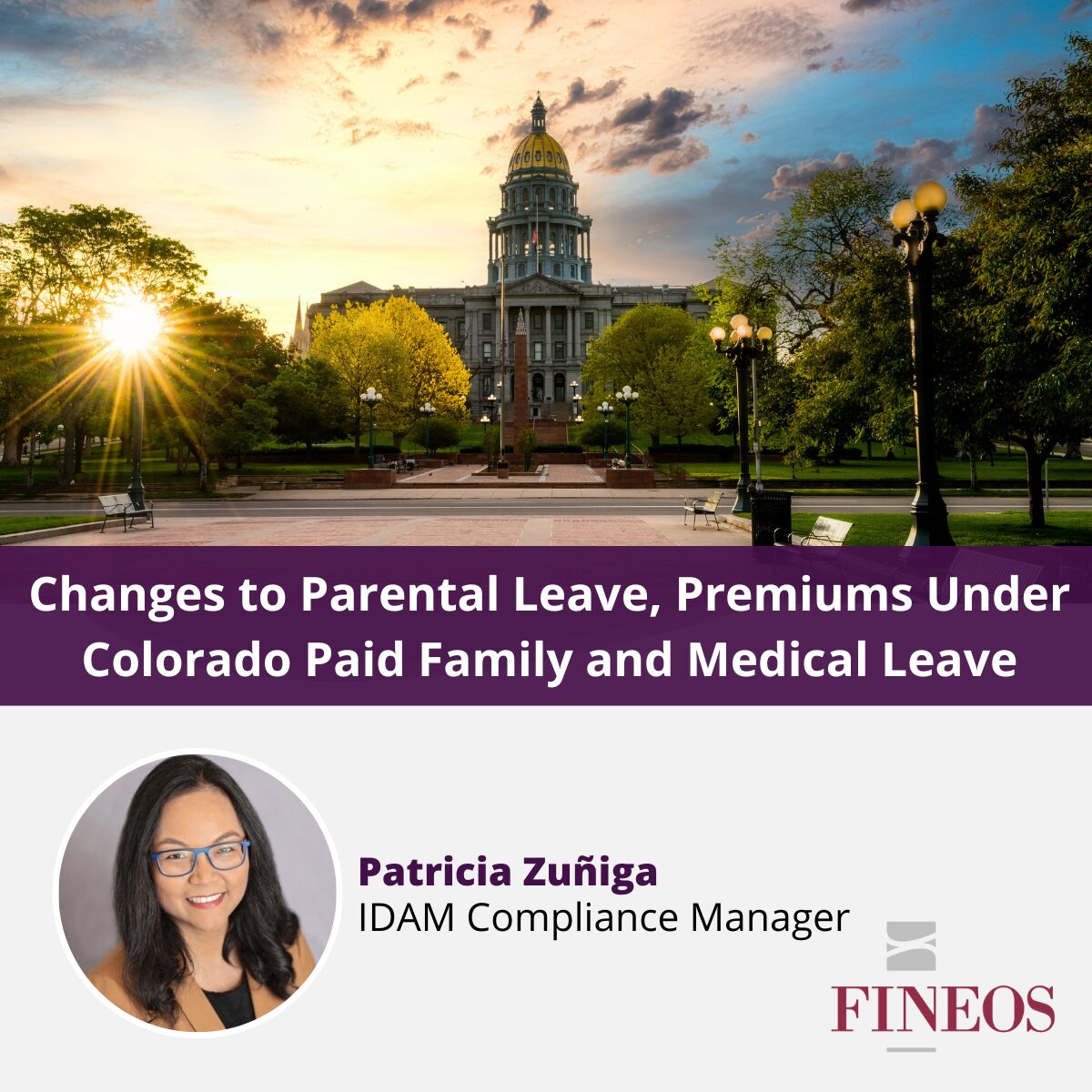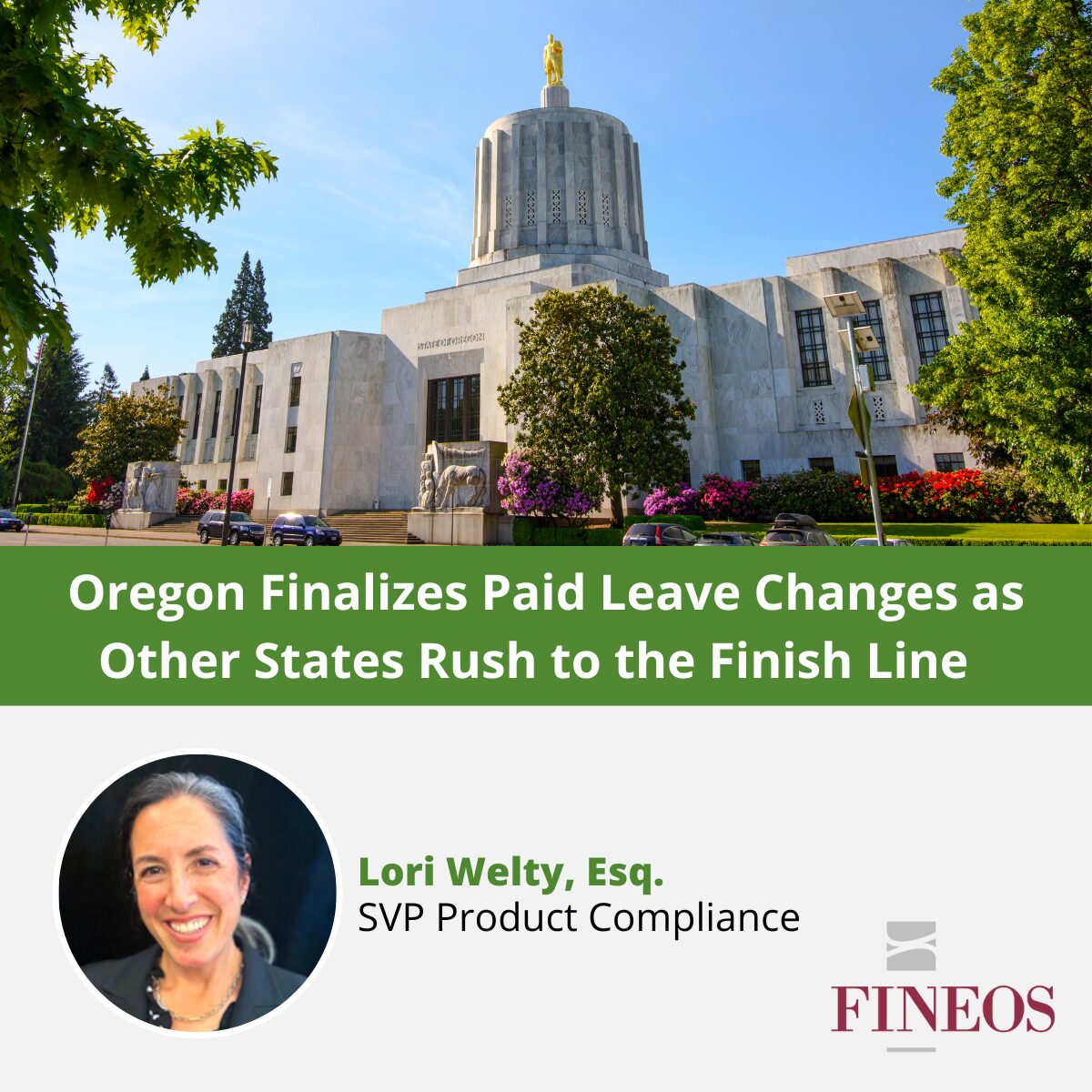Effective July 11, the Delaware Department of Labor (DOL) adopted final regulations to provide detailed clarification and guidance for the paid family and medical leave (PFML) program passed in 2022. According to the DOL’s regulatory filings, the Delaware PFML program is expected to impact nearly 10,000 of the state’s approximately 34,000 employers. Of those, approximately 8,500 have fewer than 49 employees and as such, have not had experience with absence management since they are exempt from the federal Family and Medical Leave Act.
Employers and leave administrators looking to understand employer responsibilities under the newly adopted regulations should read on for a summary of its most significant provisions:
Key Dates
While employers already knew that contributions to the program will begin on January 1, 2025, and employees may begin receiving benefits on Jan. 1, 2026, the final regulations added a few more key dates that employers in Delaware should remember while preparing for compliance with the state PFML law:
- Oct. 1, 2023 to Jan. 1, 2024: Employers can apply to reduce their employees’ parental leave duration and/or “grandfather in” their comparable plans which were in place before May 10, 2022.
- Jan. 1 to Dec. 31, 2024: Employers should count how many employees they had during this period to determine their employer size.
- Sept. 1 to Dec. 1, 2024: Employers can apply for the approval of their insured or self-insured private plans.
Parental Leave Reduction
Under the PFML law, employers with 10 to 24 employees have the option to temporarily reduce the parental leave maximum benefit duration from 12 weeks to a minimum of 6 weeks for claims submitted prior to Jan. 1, 2031 (the first 5 years after the start of benefits on Jan. 1, 2026). Employers must apply to temporarily reduce the maximum benefit duration by Jan. 1, 2024. Employers choosing to reduce maximum parental leave benefits must inform their employees of the reduction no later than Dec. 1, 2024.
Comparable Plans
Comparable plans are private employer-provided paid time off (PTO) benefits that were available to all their employees as of May 10, 2022, which could include any or a combination of the following: private insurance policies, self-insured plans, and employee handbook plans (ex. PTO banks, parental leave, salary continuation). Employer-provided benefits may be considered “comparable” if their 3 main components (benefit percent, maximum benefit, and benefit duration) are within 10% of the state plan components (80% of the employee’s average weekly wage, $900, and 6 or 12 weeks depending on the leave type).
The plan may qualify even if it does not provide all types of leave, as long as the plan provides comparable coverage on one or more leave type. For example, if an employer only has a short-term disability (STD) insurance policy and it meets the 10% test, the STD policy could be eligible to be grandfathered in as a comparable plan for medical leave. The employer would be exempt from assessing and collecting premiums for medical leave, but they would still have to be enrolled in the state plan to provide coverage for parental and family caregiving leave.
Private Plans
Employers may decide that they want to provide PFML benefits through a private plan, which can be either an insured plan approved by the Delaware Department of Insurance (DOI), or a self-insured plan. For an insured private plan to be approved, employers will be required to submit the declaration page from a DOI-approved insurance plan as well as a copy of the policy. For a self-insured private plan to be approved, employers must have at least 100 covered individuals in the plan at all times and submit a surety bond to the state.
Once the initial period for private plan approval closes, employers without an approved private plan will automatically be enrolled in the state plan and must pay contributions to the state beginning Jan. 1, 2025. For subsequent years, employers will have to wait until the next opt-out period (Oct. 1 through Dec. 1) to apply for the approval of a private plan which would then be effective Jan.1 of the following calendar year.
Employer Size Determination
To be subject to the requirements of the PFML law, an employer must employ a minimum number of employees (the “threshold number”), as follows: 10 employees for parental leave, and 25 employees for family caregiving and medical leave. The initial 12-month period to determine the employer’s employee threshold number will be the 12-month period prior to the start of contributions on Jan. 1, 2025. Employees who are covered by a waiver are excluded from being counted towards the employee threshold numbers, while employees who have signed a reclassification form will be counted towards the employee threshold numbers.
While an employer’s responsibility to provide coverage may change because of fluctuating employee counts, the employee’s leave will continue as approved, even if an employer’s threshold number has decreased. Additionally, the employer must provide notice to its employees whenever there is a change in the threshold number impacting coverage.
Waivers and Reclassification
To be covered by the requirements of the state PFML law, an employee must work at least 1,250 hours over a 12-month period. If an employee was not hired to work on a permanent basis or not expected to work at least 25 hours per week or both, the employee and employer can agree to waive coverage. If an employer’s subsequent quarterly reports show that the employee has worked for more than 12 months for the employer and that they have satisfied the 1,250-hour service requirement during the preceding 12 months, the waiver will be revoked. Waivers cannot be used to “decline coverage” for employees who would otherwise be eligible for coverage and who reasonably expect they should be covered, otherwise both the employer and the employee may be subject to fines.
Individuals primarily reporting for work at a worksite or telecommuting outside of Delaware are not considered employees unless the employer and employee elect in writing to reclassify them as such. Once an employee is reclassified, they will remain so (and will be counted towards the employer’s threshold number) until both the employee and employer agree to declassify the employee.
When the employee’s waiver is revoked or when a reclassification form is submitted, contributions will become due based on the employee’s wages.
Subsequent Rulemaking
Several sections are marked as “reserved” for the DOL to draft and engage in rulemaking at a future time. These sections include retaliation, coordination of benefits, erroneous payments and disqualification for benefits, reports, sharing technology, and departmental reporting. Employers should be on the lookout for subsequent rulemaking and additional guidance that will further clarify employer and employee responsibilities under this new program.
How is FINEOS helping carriers and employers prepare for paid leave programs?
FINEOS will be ready to administer this new leave law by its effective date. Using modern insurance technology solutions like the FINEOS Platform can help insurance carriers remain agile and competitive when leave legislation is passed. Learn more about how a modern, integrated disability and absence management (IDAM) solution can help your organization adapt to sudden changes and remain in compliance. Contact us today.


